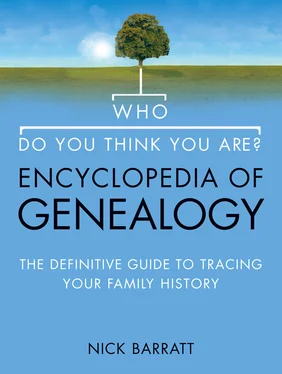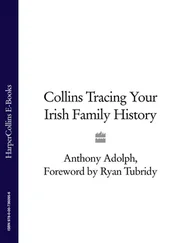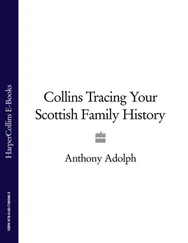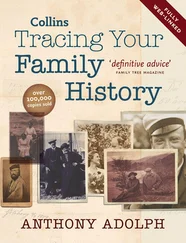Troubleshooting: What to Do If You Can’t Find Your Ancestor
It can be difficult trying to find your ancestor on the appropriate census, even if you’re pretty certain that they should be there. Here are a few reasons why you may experience problems and solutions to help you overcome these.
Data Wrongly Indexed or Transcribed
This is by far the most common reason for difficulties in locating an ancestor. It could be that, in cases of illiteracy, the enumerator at the time had to interpret and record the information given to him by the head of the household. There was no other way of verifying this data and therefore inaccuracies would not have been picked up.
Additionally, most of the websites listed above have created their own name indexes and searchable databases for the census returns, and errors may have crept in whilst compiling these resources. There are several reasons why this might have happened, ranging from the poor condition of the original returns to the difficulty that the modern transcriber faces in reading nineteenth-century handwriting. Bear in mind all possible variant spellings of forenames and surnames and how easily some letters can be confused for each other. For example, if your ancestor’s surname was ‘Parker’, it could easily have been indexed as ‘Barker’, ‘Darker’ or even ‘Porker’. Lateral thinking is often needed in overcoming such mis-indexing.
CASE STUDY
Bill Oddie pt 1
Bill Oddie’s family tree was examined for the first series of Who Do You Think You Are? The story primarily focused on his search for information about his mother, and why she disappeared from his life when he was a child. However, another part of the programme examined conditions facing other members of his family as they grew up in the industrial North West. Key to this storyline was Bill’s grandfather, Wilkinson Oddie, who was born in 1864 and worked in cotton mills for most of his life. His marriage certificate of 1907 was tracked down, when his age was given as 42 and he was described as a widower. This information permitted a search of the 1901 census, based on the fact that he would have been 36 at the time and possibly living with his first wife, in the hope of finding out more about his background.
The search concentrated on census returns in or around Rochdale, where he was living in 1907 at the time of his second marriage to Emily Hawksworth. Initially, no reference to Wilkinson Oddie could be found; however, there was a Wilkinson Oddy of the right age in the right place, and further investigation of earlier census returns in 1891, along with a check of relevant civil registration documents for his birth and first marriage, showed that this was indeed the correct person. Clearly, the census enumerator had written down a phonetic version of his name, transcribing Oddie as Oddy. This highlights one of the most common pitfalls when working with census records – you can’t rely solely on a surname, but have to incorporate all sorts of other data such as age, place of birth and occupation.
The return for 1901 showed that he was listed as a widower, living with his children Betsy, aged 12, John 9 and Mary 7 in their house in Castle Court, Rochdale. Wilkinson was a cotton loom weaver – as was Betsy. This information allowed a search for his first marriage prior to 1889, when Betsy was born, and for the death certificate of his wife after 1894, when his youngest child Mary was born.
The relevant certificates were quickly located thanks to this data, and showed that in 1888 Wilkinson Oddie married Cecilia Heneghan, a 21-year-old cotton weaver. She died in 1897 aged 31 and the cause of death shows it was a result of childbirth, a common danger at that time.
Once you’ve found an ancestor on one census return, it should be possible to locate them on earlier ones. Therefore, given the amount of information already gleaned about Wilkinson Oddie, it was fairly easy to locate him, aged 16, living at home with his parents in 1881. They were John Oddie (listed as Oddy in the census records) and his wife Mary. Wilkinson lived at home with six siblings, the oldest being 21 and the youngest only 1 month old.
By repeating this pattern, it was possible to track down John Oddie in earlier census returns as well, such as 1851. He was found living at home in Over Darwen, Blackburn, aged 15 and already working in a cotton mill, with his parents Wilkinson Oddie senior, aged 41, and his wife Mary. Wilkinson Oddie senior was born in Mitton, Yorkshire, in about 1811, and armed with this information a further search of parish registers was possible to locate earlier branches of the family.
Always remember that there have been many stages that the data has gone through to reach your computer screen and errors could have occurred at each step. If you have a valid street address for your ancestor, perhaps from a certificate, it may be worthwhile searching microfilms manually under this address if you are having difficulties locating your ancestor online.
Inaccurate Information Provided by Ancestors
It was not uncommon for ancestors to provide inaccurate details when filling in the schedule forms. This could be for a variety of reasons:
• A different name was given. Although your ancestor’s official name might have been Jennifer Sarah Marks, she could have been commonly known as Sally and be recorded under that name. People could always use their middle names as their first names or vice versa. Check both if you are having problems.
• Ages were inaccurate. Sometimes teenagers would register as older than they were so that they could work at an earlier age than was legal. Other times, people would give younger ages for reasons of vanity (especially when there were large age gaps in marriages). Alternatively, people might simply not remember their exact year of birth.
• Covering up family secrets. The most common secret a family might wish to conceal would be illegitimacy, and information might have been tweaked to hide this. For example a child may appear to be a year or two younger on the census than was the case, to mask a birth outside wedlock. Another possibility is an untruthful relationship, whereby an illegitimate grandchild of the head of the household may be recorded as their child to avoid scandal.
Bear all this in mind when searching for your ancestor. Most of the search facilities on the various websites allow people to filter the results with as much or as little detail as possible so you can allow for such inaccuracies when searching.
Your Ancestor Was Not Recorded on the Census
Although the theory was that every person living in the country at the time should be recorded, sometimes people slipped through the net. The early censuses attracted much suspicion as to why the state needed to record such personal information in the first place. Consequently people were often very reluctant to fill out the relevant forms. For example, a census return for Westminster in 1841 includes a margin note written by the enumerator stating that the head of the household refused to provide any information.
There may always be a simple explanation, in the sense that they were simply not present at home on the night the enumerator came to collect the forms, and failed to fill out a form where they were staying. Of course, the opposite is true as well, and some people appear more than once in the same census – once at their formal place of residence, and another at their lodgings whilst travelling around the country.
Additionally, babies and young children may be omitted as some parents felt that information should not be provided until the child was baptized. Alternatively, parents may not have detailed every child to avoid accusations of overcrowding. There is also the factor of human error; where enumerators had to record the information themselves (in cases of illiteracy) they may have simply missed the odd person out, particularly at the end of a long day tramping through the streets of the parish meeting hostile and suspicious householders!
Читать дальше












